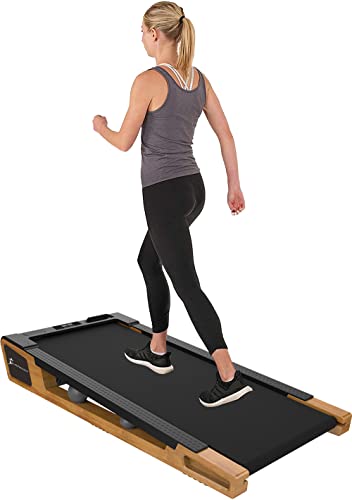The Rise of Non-Electric Treadmills: An Eco-Friendly Choice for Fitness Enthusiasts
Over the last few years, the physical fitness market has actually witnessed a rise in demand for non-electric treadmills. As individuals become more mindful of their carbon footprint and seek sustainable alternatives for their workout routines, non-electric treadmills have actually emerged as an attractive alternative to their motorized equivalents. This article looks into the advantages, types, and functions of non-electric treadmills, culminating in an extensive FAQ section to deal with common questions.
What is a Non-Electric Treadmill?
A non-electric treadmill, often described as a manual treadmill, runs without a source of power. Instead of being propelled mechanically, Manual Treadmill For Home and movement drive the belt. This design develops a special experience, frequently needing more effort but providing numerous benefits in regards to physical fitness and sustainability.
Advantages of Using Non-Electric Treadmills
- Sustainability: Non-electric treadmills eliminate the requirement for electricity, making them environmentally friendly. This reduction in energy intake can significantly contribute to lower electricity expenses and a decreased carbon footprint.
- Boosted Workout Efficiency: Users need to actively engage their muscles to keep speed, which can lead to more effective exercises. This increased effort can translate to a greater calorie burn compared to electric designs.
- Flexibility: Many non-electric treadmills can be adapted to provide different incline levels. This feature enables users to customize their exercises, targeting numerous muscle groups and tough themselves in brand-new methods.
- Toughness: Generally, non-electric treadmills have less mechanical elements than powered versions, leading to lower maintenance costs and increased durability.
- Compact Design: Many non-electric treadmills are designed with portability in mind, making them simple to move and save, ideal for those with restricted space.
Types of Non-Electric Treadmills
Non-electric treadmills can be categorized into a number of types based upon style and functions:
| Type | Description | Pros | Cons |
|---|---|---|---|
| Woodway Treadmills | Known for their curved shape, offering an unique running experience. | Minimizes impact on joints, suitable for runners. | Normally more pricey. |
| Flat Non-Electric Treadmills | Basic style offering simple performance. | Cost effective and easy to utilize. | Might not have advanced features. |
| Incline Manual Treadmills | Enables users to set an incline for added trouble. | Flexible and adjustable exercises. | Can be physically requiring. |
| Folding Non-Electric Treadmills | Space-saving styles that can be easily saved away. | Convenient for little home. | Might be less tough than non-folding alternatives. |
Secret Features to Consider
When selecting a non-electric treadmill, consumers need to prioritize the following features:
- Build Quality: Ensure that the frame is strong and made from long lasting materials to hold up against day-to-day usage.
- Running Surface: A broader and longer running surface area offers a more comfortable experience, specifically for taller people.
- Incline Options: Adjustable incline settings can enhance exercise range and intensity.
- Weight Capacity: Check the weight limitation to ensure the treadmill accommodates all desired users.
- Portability: If area is a concern, try to find a lightweight treadmill with wheels for easy motion.
- Service warranty: A great warranty shows the manufacturer's confidence in their item, providing assurance to consumers.
Non-Electric Treadmill vs. Electric Treadmill
| Function | Non-Electric Treadmill | Electric Treadmill |
|---|---|---|
| Source of power | Manual (no electricity required) | Requires electricity |
| Upkeep | Minimal, typically requires no repairs | May need mechanical maintenance |
| Calorie Burning | Usually greater due to user effort | Varies, frequently lower for the same speed |
| Customizability | Limited to manual adjustments | Offers numerous pre-set programs |
| Cost | Typically more inexpensive | Can be more pricey due to features |
Regularly Asked Questions (FAQ)
1. Are non-electric treadmills ideal for newbies?
Yes, non-electric treadmills can be suitable for novices, although they might require a steeper knowing curve for those unknown with manual treadmills. A gentle start on a low incline can relieve beginners into their fitness journey.
2. How do I preserve a non-electric treadmill?
Maintenance is very little. Routine cleaning and looking for any wear on the belt or deck can help extend the life of the treadmill. Always describe the manufacturer's standards for comprehensive upkeep directions.
3. Can I operate on a non-electric treadmill?
Absolutely! Many non-electric treadmills are created to accommodate running. However, users must begin by walking and gradually increase their pace and incline as they build strength and endurance.
4. How do non-electric treadmills manage weight?
Most non-electric treadmills have a weight capability similar to electric designs. Nevertheless, it is vital to inspect the specs to guarantee correct assistance for the user's weight.
5. Are there any disadvantages to utilizing a non-electric treadmill?
Some users might find that non-electric treadmills require more effort, perhaps making them more exhausting. In addition, they may do not have innovative features discovered in electric models, such as built-in exercises or heart rate displays.
As more people seek eco-friendly and effective fitness choices, non-electric treadmills have actually begun to capture the attention of workout lovers. With their blend of sustainability, efficiency, and toughness, these manual gadgets can elevate any exercise routine. By comprehending their advantages, types, and vital functions, consumers can make informed decisions in picking the best treadmill for their requirements, ultimately supporting a healthier way of life while contributing to a greener world.

